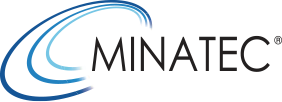News : IRIG
January 01 2023
Group IV single photon detectors
Detection of single photons boosted the development of quantum information processing, as well as finding a wide range of applications in astronomy, sensing, metrology, LiDAR, and biosensing technologies.(1) Single photon detectors (SPDs) require high quantum efficiency (>90%), low dark count rates, and ultra-fast response. State of the art superconducting nanowire SPD (SNSPD) can deliver superior […] >>
January 01 2023
Development of Super-Reducing Redox Photocatalysts
Redox photocatalysis is more and more popular in synthetic and pharmaceutical chemistry for preparing organic compounds is mild conditions. It aims to convert visible light absorbed by a photocatalyst into charges (electron and/or holes) with redox potentials well adapted for performing reduction and/or oxidation reactions. These reactions can be very efficient and enable the formation […] >>
January 01 2023
Unconventional topological spin textures in spintronics
This thesis focuses on the study of unconventional topological spin textures present in antiferromagnetic thin film materials. In the field of spintronics, spin correlations have attracted considerable attention, facilitating progress in fundamental physics and the development of new applications. Some effects, such as the topological Hall effect, are related to the specific local arrangement of […] >>
January 01 2023
Operando monitoring of reaction heterogeneities in fast charging Na-ion batteries using synchrotron radiation: from micro and nano diffraction
Sodium-ion batteries can compete with Li-ion batteries for power applications, while being free of critical metals such as Co, Ni or Li. However, fast charging can lead to inter- and/or intra-particle reaction heterogeneities causing underutilisation of the electrode and/or mechanical degradation involving particle cracking. These complex non-equilibrium processes can have profound effects on the overall […] >>
January 01 2023
Modelling silicon/germanium spin qubits
Silicon/Germanium spin qubits have made outstanding progress in the past two years [Nature 591, 580 (2021); arXiv:2202.09252]. In these devices, the elementary information is stored as a coherent superposition of the spin states of an electron in a Si/SiGe heterostructure, or of a hole in a Ge/SiGe heterostructure. These spins can be manipulated electrically owing […] >>



 Contact us
Contact us How to find us
How to find us







